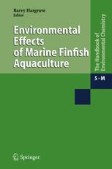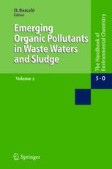Search
Search Results
-
Air Quality Systems for Related Enclosed Spaces: Spacecraft Air
Air quality in the small, closed environment of a spacecraft cabin is always a critical matter for the safety, health, and comfort of the crew. The...
-
Evaluation Methodology for Environmental Impact Assessment of Industrial Wastes Used as Highway Materials: An Overview with Respect to U.S. EPA's Environmental Risk Assessment Framework
An evaluation methodology was developed for assessing potential ecological risks posed by constituents released from waste and industrial byproducts...
-
Near-Field Depositional Model for Salmon Aquaculture Waste
An analytical near-field depositional model for solids wastes (organic matter from waste feed and faeces) from open net pen culture of finfish is...
-
Evaluation of Pesticides in Wastewaters. A Combined (Chemical and Biological) Analytical Approach
The current status of the analysis of pesticides in wastewater by chromatographic techniques and toxicity bioassays is reviewed and evaluated. When...
-
Synthetic Musks in Different Water Matrices
Nitro musks and polycyclic musks are used as synthetic musk compounds in almost all scented consumer products, such as perfumes, cosmetics, and...
-
Synthetic Musks in House Dust
House dust is a sink and repository for semi-volatile organic compounds and particle bound organic matter. Although data are available on the...
-
Applicability of Models in the Field of Environmental Chemistry of the MediterraneanSea
The present chapter highlights the problems facing when modelling the marine environment, in particular for biochemical aspects. It is shown how the...
-
Importance of Visible Light-Induced Photo-oxidationProcesses in the North-Western Mediterranean Sea
Recently, there has been a renewal of interest concerning the study of heterogeneous visible light-induced degradative reactions of lipid compounds...
-
Biological Indicators in Mediterranean Coastal Waters: a Link betweenEnvironmental Chemistry and Ecological Assessment
The initial approach to monitoring contaminants in the aquatic environment was direct measurement in the natural waters, but chemical analysis of...
-
Surface-Active Properties of the Sea Surface Microlayerand Consequences for Pollution in the Mediterranean Sea
Most biogeochemical processes in natural waters take place at different phase discontinuities, among which the largest one is the atmosphere–ocean...
-
Exchange of Pollutants (Trace Elements) at the Sediment Boundary
Marine sediments are the final depositories of trace elements entering the marine environment but they can also act as a source. In the Mediterranean...
-
Export of Air Pollution from Southern Asia and its Large-Scale Effects
Southern Asia is one of the most heavily populated regions of the world. In contrast to much of the rest of the world, biofuel and biomass burning...
-
Intercontinental Transport of Ozone from Tropical Biomass Burning
Photochemically reactive gases released by fires (e.g., NO, CO, hydrocarbons) interact as they do in an urban environment to form ozone. There has...
-
Indoor Particles, Combustion Products and Fibres
Pollutants in an indoor environment are a complex mixture of gases, vapours and particles in either the liquid or the solid phase, suspended in the...
-
Air Pollution Export from and Import to Europe: Experimental Evidence
The intercontinental transport of air pollutants from and to Europe is described in detail. The major focus is on the import of air pollution from...
-
Sensory Evaluation of Indoor Air Pollution Sources
The basic biological principles of the perception mechanisms for odour and irritants are fairly well understood. Much more uncertain is how these...
-
Air Pollution Export from and Import to North America: Experimental Evidence
North America (Canada and the USA) contains only 5% of the world’s population but accounts for 15–23% of the world’s emissions in terms of trace...
-
The Role of Musk and Musk Compounds in the Fragrance Industry
An overview of the role of musk and musk compounds in the fragrance industry is given. Discovery and syntheses of representatives occurring naturally...
-
Automobile, Bus, and Rail Passenger Air Quality
Concentrations of pollutants emitted in the exhaust of gasoline and diesel engines and from evaporation of fuels -- (e.g. CO, CO2, NO...
-
Microbial Contamination in Airplane Cabins:Health Effects and Remediation
Microorganisms that affect human health are found in all indoor environments, including cabins of commercial aircraft. Those that arise from human...
